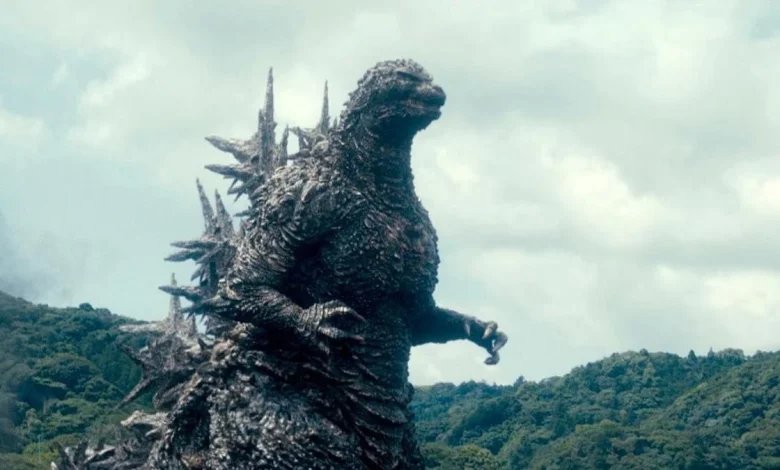Godzilla Day 2025: What the iconic kaiju teaches us about the monsters of our own making

Delhi has woken up choking yet again this week, and so have I. The air tastes like the inside of an old battery, and every laboured breath feels like the start of an argument with the conspirators of this hellscape — those self-appointed defenders of tradition who’ve turned the city into a live demonstration of lung failure. The inescapable, noxious Diwali haze has settled like fallout in the weeks since the capital’s collective festive failures, scraping against our throats and blurring the skyline into soft oblivion. Instruments across the city read like disaster logs on their more honest days. The numbers may be literal, but they’re also decidedly moral, because the air has now turned into a running tally of the city’s indulgences and denials. You can call it post-apocalyptic if you like because it’s easier than admitting it’s self-inflicted. Fitting then, that today is Godzilla Day.
Seventy-one years ago, Ishirō Honda’s Gojira lumbered out of the Pacific as the child of an atomic age. The film arrived less than a decade after Hiroshima and Nagasaki, when Japan was still recuperating from irradiated debris and unspoken grief. But this beloved cultural icon wasn’t born of mere fantasy. A mutation of fact, the creature was originally inspired by the Lucky Dragon No. 5 incident of 1954, when an American hydrogen bomb test contaminated a Japanese fishing vessel, killing its radio operator and sickening the crew. The fallout also poisoned the tuna market. For a nation that had already lived through nuclear annihilation, Godzilla felt like a ghost of the country’s ecological reckoning and collective guilt.
Honda’s Gojira captured that trauma with unnerving precision. Godzilla was the metastisis of technology turned inward, and its city-levelling footsteps kept time with science sprinting past its own ethical conscience. The film was devoid of any saviours, and was populated with bureaucrats, scientists, and citizens watching a symbol of their own ambition devour them. The monster became a cinematic requital, embodying some terrifying truths on the conflux of progress and destruction that Japan could never say aloud.
A still from ‘Godzilla: Minus One’
| Photo Credit:
TOHO
Over the decades, the metaphor mutated even further. The Cold War sequels of the 1960s and ’70s turned Godzilla into a nuclear deterrent and an uneasy guardian who saved humanity from its own inventions. The late-Showa and Heisei eras mirrored Japan’s industrial boom, turning the monster into a by-product of economic greed, toxic waste, and environmental carelessness.
In Godzilla vs. Hedorah (1971), the enemy is literal pollution — a sludge creature born from factory runoff, in the wake of Japan’s sweeping pollution laws after episodes such as Yokkaichi asthma and poisoning in Minamata. In 2011, the Tōhoku earthquake, tsunami, and the Fukushima Daiichi meltdown returned nuclear vulnerability to the public imagination. By Shin Godzilla (2016), the threat had evolved into an all-too-familiar bureaucratic paralysis and the monstrous inefficiency of governance itself. Each iteration mirrored the living crises of nuclear fallout, industrial waste and institutional failure. And yet, every version returned to the same moral core of Godzilla as nature’s impartial vengeance. The kaiju was a force without ideology, keeping score for the earth in the face of human apathy.
A still from ‘Godzilla: Minus One’
| Photo Credit:
TOHO
The recent Global Tipping Points synthesis places a central threshold for warm-water coral reefs at about 1.2°C above pre-industrial levels. Current long-term warming sits around 1.4°C, which means warm-water reefs have already passed a central estimated threshold. The world’s hottest year on record is closing out with collapsing ice shelves in West Antarctica and coral bleaching in the Pacific. Once called the planet’s lungs, the Amazon has become a net emitter of carbon. Floods in Pakistan displaced thirty million people last year. Wildfires have rewritten the geography of California, Greece, and Canada.
Researchers also estimate the military sector accounts for about 5.5 percent of global greenhouse emissions and global military expenditure in 2024 reached roughly $2.7 trillion. War, preparation for war, and the military-industrial complex are not incidental to the climate crisis, but direct accelerants.
Meanwhile, the environmental fallout of the last two years of genocide in Gaza has been nothing short of catastrophic. Researchers estimate the first 120 days of the conflict emitted more greenhouse gases than the annual output of 26 individual countries. A study places the long-term rebuilding cost of Gaza at around 31 million tonnes of CO2 equivalent — roughly the annual emissions of nations like Costa Rica and Estonia. Over 39 million tonnes of concrete debris now lie across the Strip after Israeli bombardment, and clearing it may itself generate tens of thousands of tonnes of CO2 over decades. Much like the creature’s horrifying revival in last year’s Godzilla: Minus One, the people of Gaza will likely spend years sifting through the wreckage of a poisoned earth, haunted by a monster of ash and dust they didn’t summon.
A still from ‘Godzilla: Minus One’
| Photo Credit:
TOHO
Closer home, Delhi summers now go beyond fifty degrees, and the Yamuna periodically swells into neighbourhoods and and displacing settlements built on its riverbed. You can draw a straight line from Honda’s black-and-white Tokyo to the grainy videos of smog-suffocated Delhi streets today.
If Godzilla began as Japan’s reckoning with the nuclear age, its later decades have turned into a slow unmasking of Western imperialist exceptionalism. The creature’s endless resurrections are dispatches from a planet under siege by imperial appetite, with each new disaster tracing back to the same machinery of profit, extraction, and occupation. The 21st century’s climate collapse is the cumulative exhaust of a century-long empire project that treated both human lives and ecosystems as expendable resources. The world is choking on the fumes of an empire that sold us the horrors of conquest as progress. Capitalism has simply globalised the art of taking until the world breaks that colonialism perfected.
A still from ‘Godzilla: Minus One’
| Photo Credit:
TOHO
Godzilla feels like the only honest auditor left. It’s hard not to imagine the kaiju surfacing through this mess once more, shaking off oil slicks and microplastics, to remind us what retribution really looks like. It’s hard not to hope for the next figurative blast of atomic breath to scorch the very flesh off every climate-change denialist; or vaporise the ranks of every blame-deflecting moralist and self-righteous firecracker loyalists who seem to treat the smog as some sort of birthright.
On Godzilla Day, the prescience of the franchise’s storied legacy has given us a vocabulary to literalise the objective truths of ecological collapse. Godzilla has always been the bluntest instrument of clarity, rendering invisible consequences visible, and forcing the slow violence of our choices into a single moment of reckoning. It shows us the shape of what happens when systems are taxed beyond their tolerance, and should we refuse its lessons, we would be entirely complicit in our impending catastrophe. How long we live with that knowledge (or pretend not to) will be the only measure left for this generation.
Happy Godzilla Day to all you kaiju-nerds celebrating seven decades of cinema’s most beloved nuclear bomb.
Published – November 03, 2025 07:12 pm IST





